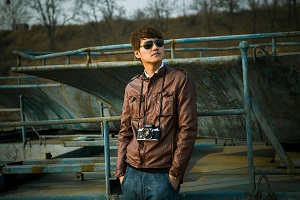Tips One Must Keep in Mind while Setting Up Horse Race Rails
May 12, 2019
Horse race rails procure multiple roles in racing, the most important being, demarcating the racetrack, for the guide and the horse to follow a proper trail. They’re an essential requirement in the racing world, so the race rails you choose must stand the test of time while ensuring the safety and comfort.
This sport of horseracing is spectacular, in itself, but accidents should be avoided, and one of the ways to prevent them, is by choosing the right horse race rails. Running rails consist of three essential structural components, the rail profile, the ground footing beside the post. But the choice, planning, selection of material and durability of the horse race rail fence warrants essential considerations.
 |
| Horse Race Rails |
- Ascertain the Purpose of the Fence: There are a variety of fences available made from different materials, having varied durability and suiting the needs of different types of races and horses. While setting up the fence one must decide the purpose of it whether it would involve a hurdle race or speed race. They must also take the climatic conditions and nature of the horse into account.
- Avoid Less Foresight and Hurried Planning: The owners of the field should judge the budget, safety issue, durability, permanence, aesthetics, core efficiency, management practices, and longevity and then proceed with the planning. These fences must be expertly designed and tested prior by professionals to prevent any future mishaps.
- The Fence Should Warrant Visibility: Horses scan the horizon perimeter for danger and so when they sense any danger they run into the fence. The fence should also minimize injury. It should be able to stop the horse without causing it permanent damage.
- Avoid Deep Corners or Cattle Guards or Rickety Fence: There is no need for any thorny wires around the fence as it may permanently hurt the horse. There should be no deep corners where one horse might be bullied or there must be any water channel kept in a corner where one horse might prevent another from drinking it. It may cause conflict and tension.
- Avoid Installation of Any Sharp Items: There should be no tractor implements, pins, nails, metal shards as it may cause injury to the horses.
- Avoid Overgrown Shrubs Nearby and Maintain A Clean Race Trail: It may cause the horse's hooves’ to entangle and fall.
- Maintain Rounded Corners and No Triangular Items on Fences: The corners of fences should be rounded to allow any bullied horse to escape and there should no sharp corners.
- Avail A High Ground For Better Drainage: To prevent any damage sliding the horses should have a proper shed and water trough. The ground must be high to allow any accumulated water to escape. It prevents the ground from being muddy and slippery. The horses can run freely on any grassy surface which is not slippery or muddy.
- Design It Well and Use the Right Materials for Lesser Impact: Moreover, the horse race rail fence should be properly equipped and designed to deal with the pressure, that a competitive environ produces. Most of the accidents occur due to impact with the rails, so ensuring they are made from the right material and minimize risks or injuries is important. Material like steel should be avoided as they result in high impact, so using top-notch uPvc is a great idea.
Conclusion
It is essential to get hold of a right company that takes charge of building race rails, gives you the option to choose the right shapes and designs, for your race rails, utilizing the proper materials, prioritizing the safety of the horses and the trainers, while doing so, in an affordable cost bracket.



0 comments